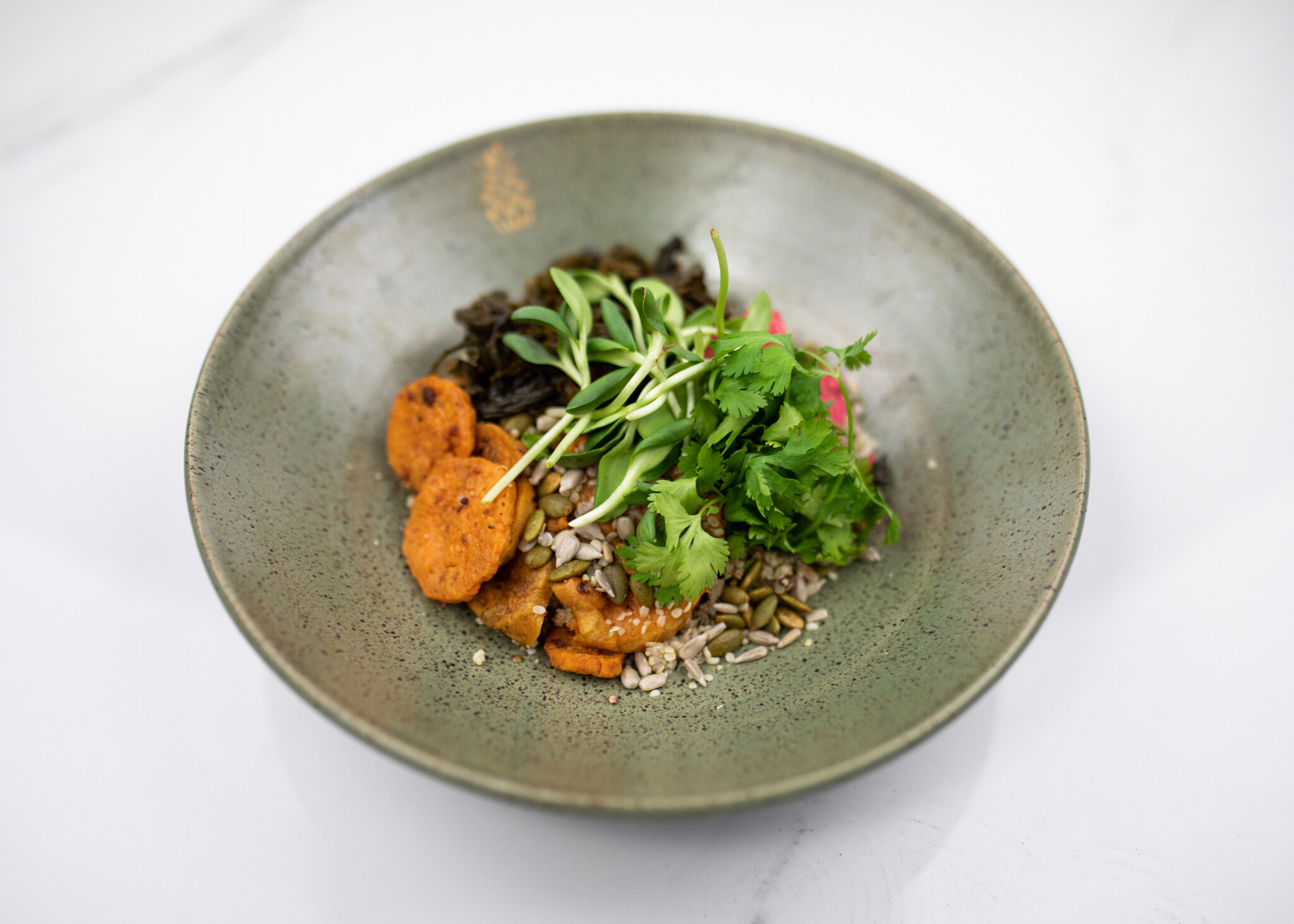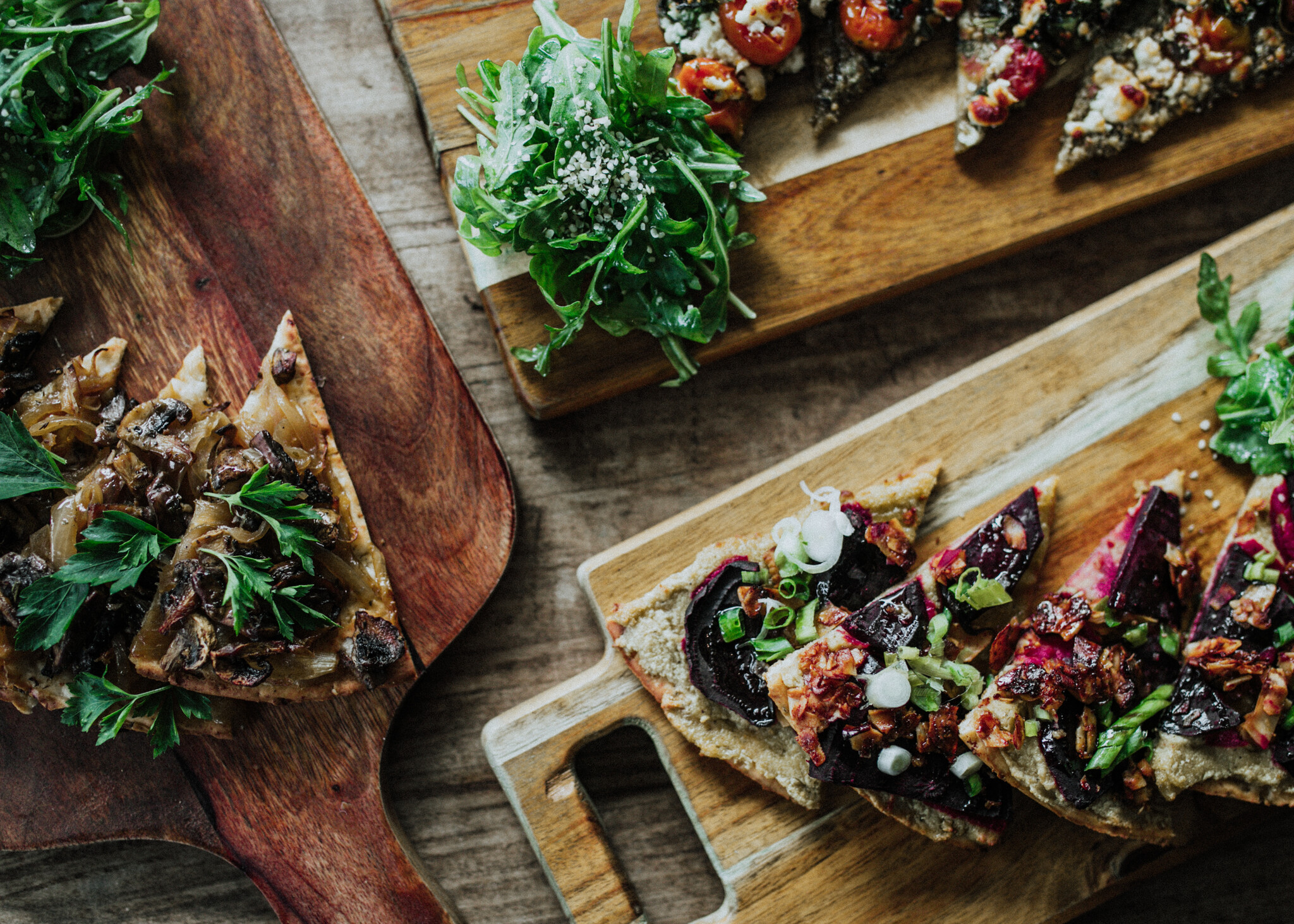Allergens in the Food World - Navigating Dietary Restrictions

Vegan, vegetarian, pescatarian, nut free, dairy free, gluten free… whether due to personal preferences, allergies or intolerances, ethical convictions, religious beliefs or other reasons, many of us today are eating with what have come to be known as “dietary restrictions”.
Regardless of an individual's reasons or needs for limiting, avoiding, or omitting certain foods, their specific restrictions should be respected and taken seriously. This is especially important when it comes to preparing food for others, whether it be packaged products sold on a grocery store shelf, pre-made items from the deli counter, or plated meals served at a restaurant.
For those living with dietary constraints, the importance of strictly adhering to and accommodating them is likely easily understood and accepted. But for those whose food options are unlimited, the need for such stringency may be hard to comprehend. Read on to bridge the understanding gap and to help make navigating dietary restrictions a little easier for everyone.

First, let’s take a look at some of today’s most commonly used dietary terms, and what they mean.
We’ll start with one of the oldest - vegetarian. This term dates all the way back to the mid-1800’s when the first vegetarian society was formed.
Vegetarian refers to a diet that excludes meat and fish, or to a person who does not consume meat or fish. While some certainly avoid meat products out of preference, vegetarianism is typically in alignment with a person’s ethical, cultural or religious beliefs.
Pescatarian refers to a person or diet that excludes meat but does include fish, often for personal health or environmental related reasons.

Vegan means that a person’s diet contains no animal products whatsoever. This diet omits all types of meat, including poultry and fish, as well as eggs and dairy products. By definition, honey would also be restricted on a vegan diet, however, it is not uncommon for people who classify themselves as vegan to consume honey. Those who are vegan may be so because of religious or cultural beliefs, while many others choose this diet for ethical reasons often relating to environmental impacts and animal rights.
For some, certain dietary restrictions and food choices, such as following a vegan, vegetarian or pescatarian diet, might be more in line with their preferences and belief systems. For others, restrictions may be more directly related to health concerns, including allergies and intolerances.
When serving and preparing food for other people it’s important to equally respect and give careful consideration to all dietary restrictions, but when it comes specifically to allergies and intolerances, it is of the utmost importance. There is much less room for error and forgiveness when dealing with restrictions of this kind.
A person with allergies or intolerances to certain foods may experience adverse reactions when consuming these foods. Reactions vary from person to person and can range from upset stomach to diarrhea, nausea to vomiting, and skin irritations such as itchiness and hives to swelling of the face, lips, and eyes. In the most severe cases, food allergies can cause constriction of airways which can literally become a matter of life and death.
Clearly this is an issue to be taken seriously. In fact, in 2004 Congress passed the Food Allergen Labeling and Consumer Protection Act requiring that the eight most common food allergens be listed on all packaged food labels. This list consists of milk, eggs, fish, shellfish, tree nuts, peanuts, wheat, and soybeans. Because it can sometimes be tricky to decipher ingredients listed on packaged foods and identify allergens, these eight common allergens (and often others) will always be noted at the very end of the ingredient list if they are contained in that product. Companies also typically make note if their products are produced or processed on shared equipment or in facilities with specific common allergens.

Now, it’s important to note that there is a significant difference between food intolerances and food allergies. Food intolerances are commonly referred to as food sensitivities and though they can cause upset and discomfort, they do not trigger allergic or life threatening reactions. Simply put, the term refers to foods that are difficult for a person to digest and therefore are intolerable or not well tolerated by their body.
Food allergies on the other hand, are foods that trigger an immune system response when consumed or ingested. Although levels of sensitivity, severity, and reactions vary from person to person, extreme cases can be life threatening as mentioned earlier. It is crucial to treat all allergies with the highest level of caution.
In some cases, food allergies are so sensitive that even if the food itself wasn’t eaten, an allergic reaction may be triggered by what is known as cross contamination. Cross contamination happens when any amount of a food allergen, even microscopic, gets onto another food, eating surface, or utensil. This can occur anywhere from production, to preparation, to the service of food. For example, in manufacturing facilities the same equipment might be shared for processing or packaging numerous different products; in preparation, the same utensils, cooking equipment, cutting surfaces etc. may be used for many different ingredients; and in service, a single pair of gloves may be worn while handling a variety of food items or multiple plates, and servings may be plated or assembled within a common area.
Because of this, it is imperative that food service employees be adequately trained on the proper handling and preparation of foods and beverages, as well as the ingredients each product or dish contains. Many restaurants take an extra step to ensure guest safety by advertising common allergen ingredients used in specific dishes on their menu, as it may not otherwise be obvious to a diner. For example, pesto containing nuts, bread containing eggs, hummus containing sesame seeds, or sauces containing wheat or soy. It has also become more common for restaurants to advise caution on their menu that although a product may not contain a specific allergen, it is prepared with the same equipment or in the same kitchen as possible allergens, creating the potential for cross contamination. As a customer, consumer or restaurant patron, it is important to take ultimate responsibility for your health and wellbeing, and never hesitate to inquire about ingredients, preparation, sanitation practices and so on.
A more and more prevalent dietary restriction we’ll elaborate on is gluten. Gluten is a protein naturally found in certain grains (often referred to as “cereal grains”), including wheat, barley, and rye. Gluten is also widely found outside of these specific grains as it is often used in processed products to act as a thickening agent.
While wheat naturally contains gluten, an allergy to wheat is not the same as an allergy to gluten, and this is an area of common misunderstanding. As previously mentioned, a food allergy is when a particular food triggers an immune system response causing specific reactions and symptoms, some of which can be life threatening. It is possible for a person to be intolerant or allergic to wheat. It is also possible for a person to be intolerant to gluten, but gluten does not cause allergic reactions, and is therefore not an allergen.
Now let’s talk about an autoimmune disorder called Celiac Disease, which is an immune response triggered by the consumption of gluten. As with allergies, individual symptoms, sensitivity, and severity levels vary from person to person. It is important to realize that though symptoms might be manageable and are not life threatening, over time consumption of gluten by a person with Celiac Disease may cause damage to the lining of their small intestines. Such damage can eventually inhibit proper absorption of nutrients, potentially leading to malnutrition and extreme weight loss. In the case of Celiac Disease, cross contamination may be of concern.
As a food service worker taking orders from a guest that has a dietary restriction, it is important to ask questions to fully understand and appropriately fulfill their needs.
First, it’s good to ask whether their restriction is an allergy or a preference. If it’s a preference, cross contamination will likely not need to be considered, though it is possible they may have stipulations associated with cultural or religious beliefs and practices that they would like to have accommodated.
If it is an allergy, intolerance, or Celiac Disease it is crucial to inquire about the severity and whether cross contamination is an issue. This information, along with the specifics of the particular food establishment, will determine how to proceed accordingly. It may be necessary to advise them that cross contamination is a possibility when using shared grills, toasters, ovens and fryers. In many instances, accommodations can reasonably be made by altering preparation steps. Finally, their allergy must be clearly communicated with those who will be preparing and handling their food.

As a customer, it’s important to keep in mind that even if a menu item is labeled as gluten free, nut free, or vegan it does not necessarily mean that the preparation processes guarantee the item will not be cross contaminated and remain free of the allergen. Again, this can likely be the case with shared kitchen equipment, areas, and surfaces, so it is best to be persistent in inquiring about such.
Here at the Green Pineapple Wellness Cafe, we are proud to consider ourselves an allergen-friendly establishment. We strive to ensure that dietary restrictions are accommodated and take careful precautions when preparing and serving foods being extra mindful of cross contamination. Though we do use ingredients that are known to be common allergens, we are diligent in listing them on our menu and on labels for quick and easy identification. When looking over our menu, you will notice the following notations:
NF = nut free (please note, this does not refer to seeds)
SF = soy free
DF = dairy free
V = vegan (does not contain eggs, dairy, fish, meat or honey)
GF= gluten free (our entire menu and house-made baked goods are gluten free, with the exception of our croissants which are not gluten free)
We hope that you will find this knowledge useful when preparing or serving foods for others, navigating your own dietary restrictions when shopping or eating out, or when trying to decide which of our delicious menu items to enjoy. Please let us know if you have any questions in regards to our ingredients and preparation process. We are passionate about serving delicious food to every customer and look forward to seeing you in our cafe soon whether you’re vegan, vegetarian, pescatarian, nut free, dairy free, or gluten free.



